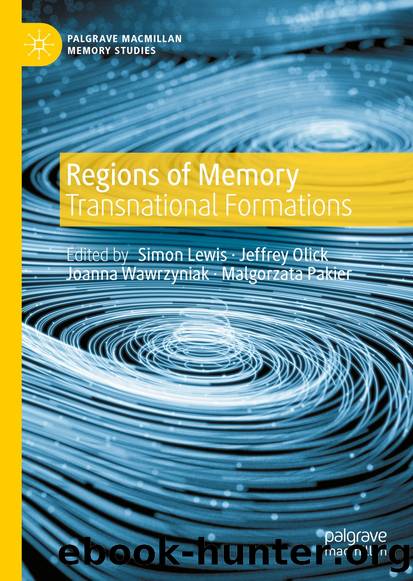Regions of Memory by Unknown

Author:Unknown
Language: eng
Format: epub
ISBN: 9783030937058
Publisher: Springer International Publishing
The European Union
The same politics played out in European Union institutions. The âdouble genocideâ thesis was popularized by East European political leaders and intellectuals in the âPrague Declaration on European Conscience and Communismâ in 2008, and then given official recognition a year later in a European Parliament resolution on âEuropean Conscience and Totalitarianismâ that condemned âtotalitarian crimesâ (Neumayer 2019). The resolution is an outright challenge to the Western European belief in the uniqueness of the Holocaust, represented by an earlier declaration, the Declaration of the Stockholm International Forum on the Holocaust, signed by 46 governments in 2000. The Stockholm Declaration became the founding document of the International Holocaust Remembrance Alliance (IHRA), which is committed to promoting Holocaust memory as the foundation of a common European memory culture. As âunprecedented,â declares the IHRA, the Holocaust âfundamentally challenged the foundations of civilizationâ and âwill always hold universal meaning.â Accordingly, âit must be forever seared in our collective memoryâ as a warning against âgenocide, ethnic cleansing, racism, antisemitism and xenophobiaâ (IHRA). In this mode, Holocaust memory stands at the core of anti-racist education and genocide prevention. Passed 55 years after the liberation of the death camps, the Stockholm Declaration was regarded by EU elites as compensating for decades of official silence about the Holocaust. Already in 1995, they had debated making 27 Januaryâthe day in 1945 that Soviet troops entered Auschwitzâan official day in memory of the victims of the Holocaust, an idea taken up ten years later by the United Nations. In the place of failed efforts to provide an integrative EU memory based on common heritage, the Holocaust would now serve as Europeâs foundation myth, the negation of its stated values (Diner 2004; Littoz-Monnet 2012).
This is not how East European states that emerged from communist rule saw matters. When ten of them joined the European Union in 2004, the opportunity arose to influence the continental memory regime. Conservative anticommunist governments among them could not regard 1945 and the liberation of the death camps as the European foundation moment because that year also marked the reimposition or commencement of nearly fifty years of Soviet domination. During 2008, conservative East European members of the European Parliament organised a conference and working group on âUnited Europe-United Historyâ that led to the foundation of the âReconciliation of European Histories Group,â an informal all-party group of the European Parliament dominated by anti-communist East Europeans politicians. By reconciliation, it meant establishing a common approach to Nazi and Soviet crimes that sought equal treatment of all victims of totalitarian violence. As might be expected given its orientation, the group opposed a proposed EU ban on the Nazi swastika because not also banning Soviet symbols would represent a double standard. In the same year, the European Commission, then chaired by a conservative Slovenian government, held public hearings on âCrimes Committed by Totalitarian Regimes,â and published a report coupling Nazi, fascist, and Stalinist crimes (Toth 2010, 8â10).
With supportive signals from the European Commission, which now sought to forge common European
Download
This site does not store any files on its server. We only index and link to content provided by other sites. Please contact the content providers to delete copyright contents if any and email us, we'll remove relevant links or contents immediately.
Kathy Andrews Collection by Kathy Andrews(11767)
The remains of the day by Kazuo Ishiguro(8894)
Spare by Prince Harry The Duke of Sussex(5142)
Paper Towns by Green John(5141)
The Body: A Guide for Occupants by Bill Bryson(5031)
Industrial Automation from Scratch: A hands-on guide to using sensors, actuators, PLCs, HMIs, and SCADA to automate industrial processes by Olushola Akande(5027)
Machine Learning at Scale with H2O by Gregory Keys | David Whiting(4261)
Be in a Treehouse by Pete Nelson(3999)
Never by Ken Follett(3885)
Harry Potter and the Goblet Of Fire by J.K. Rowling(3810)
Goodbye Paradise(3763)
Into Thin Air by Jon Krakauer(3349)
The Remains of the Day by Kazuo Ishiguro(3348)
Fairy Tale by Stephen King(3308)
The Cellar by Natasha Preston(3299)
The Genius of Japanese Carpentry by Azby Brown(3255)
120 Days of Sodom by Marquis de Sade(3227)
The Man Who Died Twice by Richard Osman(3041)
Drawing Shortcuts: Developing Quick Drawing Skills Using Today's Technology by Leggitt Jim(3038)
